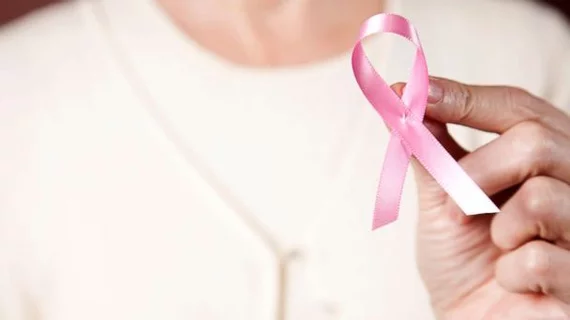News coverage of mammography screening recommendations was found to often convey a controversial and/or conflicting tone, which researchers say may negatively influence a woman's decision regarding breast cancer screening and trust in cancer prevention recommendations, according to research published online Nov. 5 in Women’s Health Issues.
Although the accuracy of media coverage about mammography screening has increased over time, researchers, led by Rebekah H. Nagler, PhD, assistant professor of the Hubbard School of Journalism and Mass Communication at the University of Minnesota, in Minneapolis found media coverage over the last eight years has given more attention to the risks of mammography screening than the benefits.
This trend, the researchers explained, is also reflected in conflicting mammography screening recommendations issued by organizations such as the U.S. Preventative Services Task Force (USPSTF) and American Cancer Society and the media’s inability to follow such shifts. Since 2009, the organizations have leaned away from recommending routine screening and have emphasized informed decision making for average-risk women beginning at age 40.
“The fact that most research on media coverage of mammography controversy has focused on single media events is consistent with a broader media influence paradigm that sometimes fails to recognize the dynamic, evolving, often competing way in which media messages operate in the public information environment,” Nagler et al. wrote.
Because roughly half of U.S. adults get their news from television, Nagler and colleagues analyzed televised news segments from four individual media events shown between 2009 and 2016, all of which focused on publicized mammography screening recommendations from the USPSTF and American Cancer Society.
The study included 364 televised news stories from the following four events:
- The November 2009 USPSTF recommendations (113 stories).
- The April 2015 draft of USPSTF recommendations (87 stories).
- October 2015 ACS recommendations (89 stories).
- January 2016 USPSTF final recommendations (75 stories).
The researchers found roughly half of 2009 USPSTF television coverage emphasized conflict and/or controversy. Although the number of 2015-2016 stories using on-screen words to describe screening recommendations as conflicting and/or controversial decreased, the news stories continued to emphasize conflict, the researchers found.
Althought USPTF coverage from January 2016— when overdiagnosis as a mammography screening risk was popularized—study results showed fewer than 10 percent of stories discussed the concept of overdiagnosis, even though the final USPTF recommendations at that time emphasized it.
Though the researchers recommend additional research regarding the effects of exposure to media that discuss mammography risks and benefits, their findings could help with developing strategies to better equip women during the breast cancer screening decision-making process.
"It may be important to work with practitioners to better equip all women ... to negotiate conflicting mammography recommendations and weigh the benefits and risks of screening," the researchers concluded. "It may also be worthwhile to work with journalists to improve communication about these complex issues, because health professionals are important sources from which local journalists draw."

